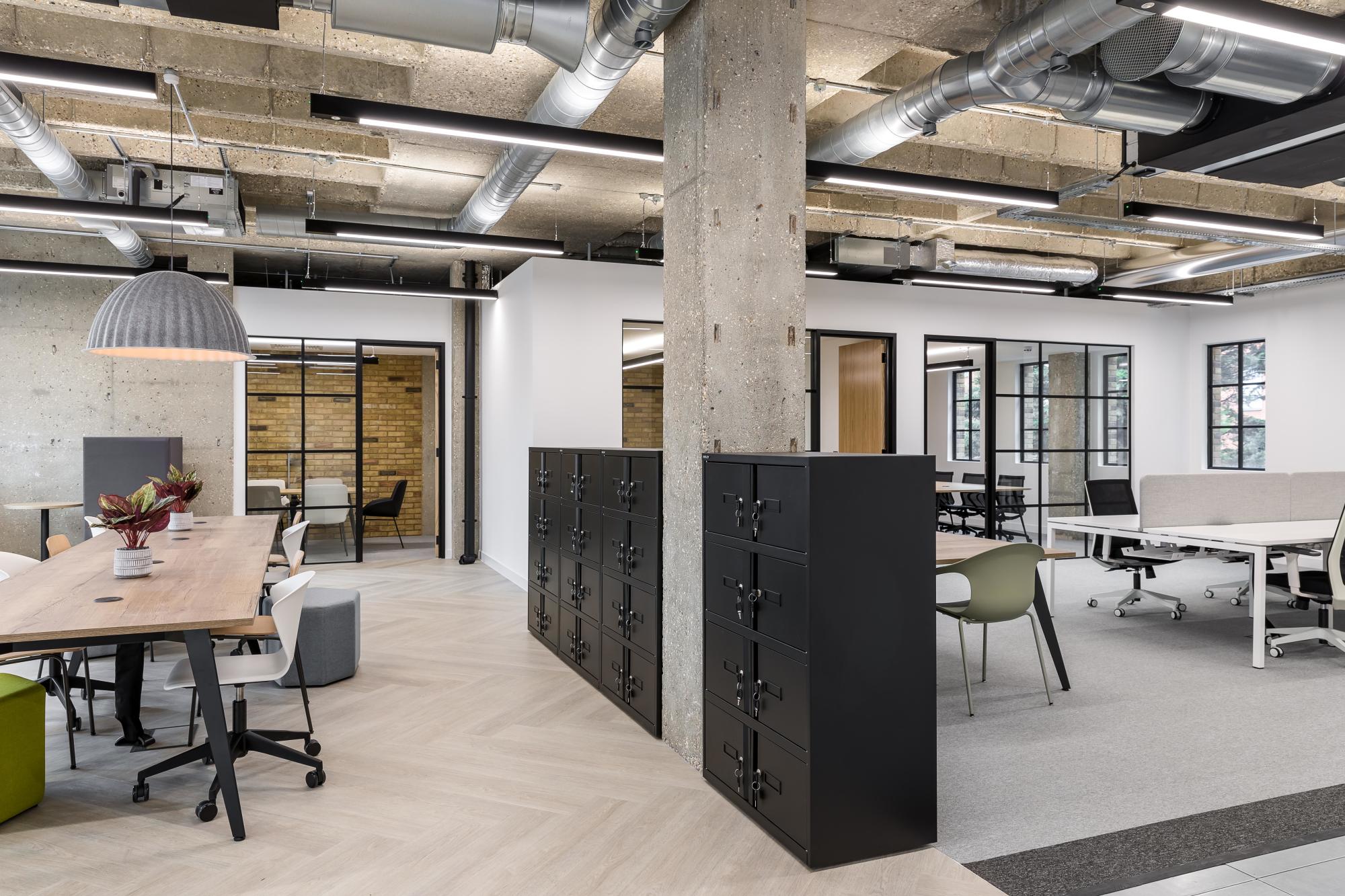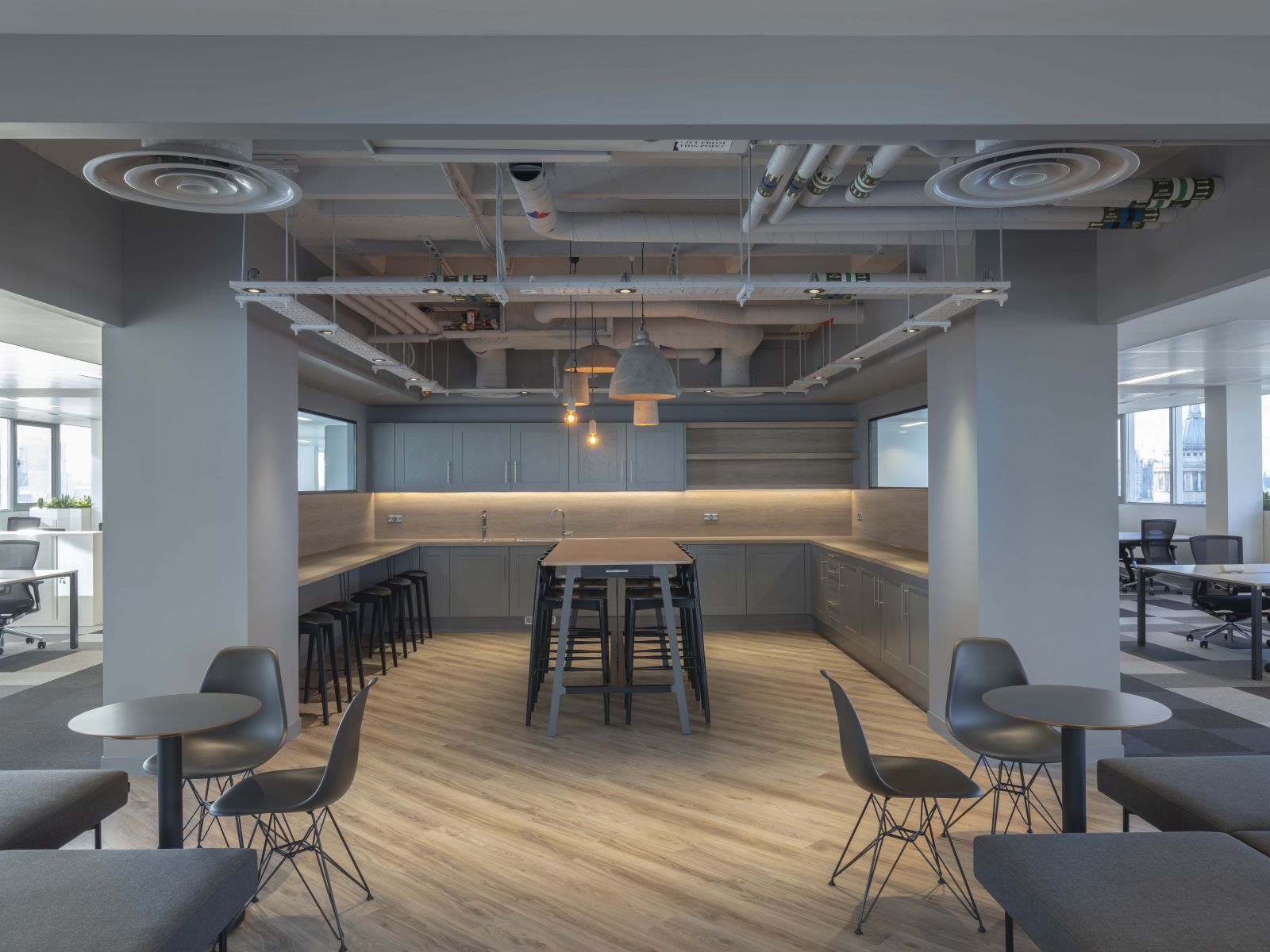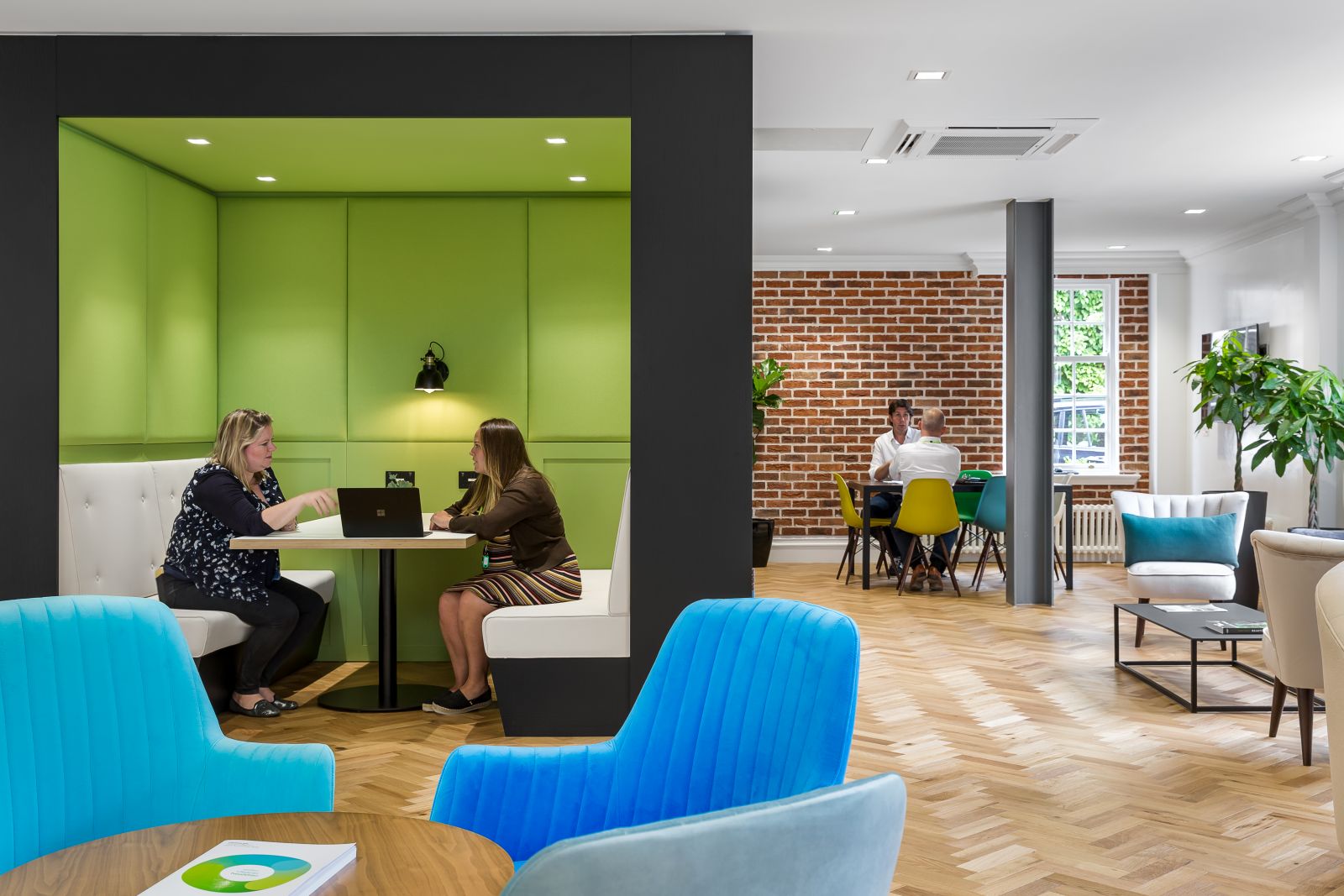Leaked Report Suggests Perspex Screens in Offices Should be Scrapped
According to a draft cabinet report seen by POLITICO, ministers are being advised perspex screens do little to prevent the transmission of COVID-19. The report...
Read Full Article
The world has learned a lot about the way we work in the last few months. Oktra managing director Martin Reeves discusses what is certain about the future of workspace.
Reeves is a managing director at Oktra, a UK office design and build company that’s created workplaces for brands such as Gymshark, Adidas and TripAdvisor. With over 20 years of experience in architecture, Reeves works with teams around the country to create successful delivery strategies for projects across sectors. He is currently working with tenants and landlords to establish workplace requirements that achieve their goals, support their future operating models and facilitate their safe return to the office.
“Landlord requirements are also shifting to reflect an increase in demand for Cat A+ and Built to Lease spaces. Ultimately, these spaces afford greater creativity to landlords while remaining more accessible for tenants. The result is that private workspace is becoming more attainable for businesses under 10,000 sq ft, and is likely to remain a key part of core offerings in the future.”
–Martin Reeves
Managing Director, Oktra
When asked about the future of workplace design, there is an overwhelming tendency to offer the caveat, “no one knows for sure what the future will look like, but…”
The coronavirus pandemic has forced all of us to work differently. As lockdown restrictions ease in the UK and businesses slowly begin to return to the workplace, we’re starting to think ahead and examine the new ways of working that have developed during this period.
While the typical office model continues to become more flexible and accessible, the post-pandemic workplace will remain a focal point of company culture, community and collaboration.
Remote working is one of the most positive workplace changes to come from COVID-19. The “Global Work-From-Home Experiment” has proven the viability and benefits of remote working to all organisations. Consequently, businesses are re-evaluating their space requirements and tenants are prioritising communal spaces, meeting spaces and environments that don’t rely on traditional desking.
Landlord requirements are also shifting to reflect an increase in demand for Cat A+ and Built to Lease spaces. Ultimately, these spaces afford greater creativity to landlords while remaining more accessible for tenants. The result is that private workspace is becoming more attainable for businesses under 10,000 sq ft, and is likely to remain a key part of core offerings in the future.

Picture: A photograph showing the interior of an Oktra office fit-out, showing a kitchen space. Cat A+ fit outs provide fully-finished workspace ready for occupation, giving landlords more creative control while making private office space more attainable for small businesses.
The new normal will see a balance between remote and office-based working. The mandatory adoption of remote work practices has strengthened the trust between management and employees, while promoting a greater work/life balance and employee wellbeing. However, the scales start to tip in the other direction when remote working becomes a full-time solution.
Remote work locations, particularly the home office, are siloed by nature, leading to isolation and hindered communication that can negatively impact mental health, productivity and innovation. Organic interaction – the type that occurs in an office - prompts higher levels of collaboration and creativity than structured calls and virtual meetings. Going to the workplace helps build a sense of community that’s unmatched by remote strategies alone.
The office is here to stay with a newfound focus on work environments that people actively want to return to. The way we use space has changed drastically over the past few months and some businesses are seeing a reduction in rental liabilities by as much as 50 per cent. There is now an opportunity to emphasise quality over quantity in an unprecedented way, meaning design priorities will shift from space optimisation to more human elements like culture, community and collaboration. These three aspects of work are incredibly difficult to support remotely, which is why the office will continue to be a key driver of business success.

Picture: A photograph showing two people meeting at a table. Environments that support culture, community and collaboration will be a defining feature of post-pandemic workspace.
Company culture relies on collective buy-in to a set of core values and beliefs. Aligning your workforce through a shared vision results in the reduction of affinity distance. That distance is much easier to reduce when people have a shared space for experiences like townhall meetings or celebrations, and spontaneous interactions.
Community is the reason most of us will return to work. Many people can continue to do their job from home quite successfully. Providing desk space is no longer the primary function of the office. Instead, it needs to provide something that adds to employees’ quality of life. The future of workplace design lies in its power to encourage active collaboration. In a recent sentiment survey, over 76 per cent of Oktra employees said their ability to collaborate in person was a leading factor in their desire to return to the workplace.
By now we are experts at collaborating remotely, but most of the collaboration we’ve maintained is task-oriented. The workplace supports location-based collaboration via proximity and natural interaction, which leads to a higher degree of creative thinking and innovation. The next generation of workspace will undoubtedly prioritise spaces where location-based collaboration can flourish.
The post-COVID era, like all other eras before it, will bring new ways of working and new professions to facilitate them. The future workplace will use design to promote person-to-person connection within and between teams and departments, encouraging collaboration and harnessing the creative power of a shared vision and experience.
Picture: A photograph of an office interior
Article written by Martin Reeves | Published 25 June 2020
According to a draft cabinet report seen by POLITICO, ministers are being advised perspex screens do little to prevent the transmission of COVID-19. The report...
Read Full ArticleWhat do the experts say about the physical and cultural trends predicted within businesses when offices begin to open up? It’s...
Read Full ArticleFlexible office provider Office Space in Town has today launched “OSiT Adjust”, a product which allows their clients to reserve a serviced office space on a...
Read Full ArticleSodexo’s workplace experience design consultancy Wx has launched Space eXperience, a connected office building management solution that supports...
Read Full ArticleWith workers in the UK seeing the first relaxation of lockdown rules, how organisations will keep employees safe as they begin to transition back to their places of work...
Read Full ArticleCushman & Wakefield is pioneering a new office design scheme based around the “six feet rule” of social distancing. The global real estate...
Read Full ArticleWith COVID-19 creating a dramatic and sudden shift in the way we work, there’s little doubt that this pandemic will change the commercial real estate sector. We...
Read Full ArticleColliers’ latest Occupier Cost Index shows costs remain out of step with occupancy, with soft services increasing by 8 per cent in 2024. The Occupier Cost Index...
Read Full ArticleAs the workplace continues to evolve with new norms and expectations, the question remains: will Gen Z adjust, or be the ones reshaping it? Paul Sherwin from office...
Read Full ArticleGlobal travel brand Skyscanner has a new Edinburgh hub in the heart of Quartermile. The new office spans two floors and 25,000 sq ft of space, and has been completely...
Read Full Article